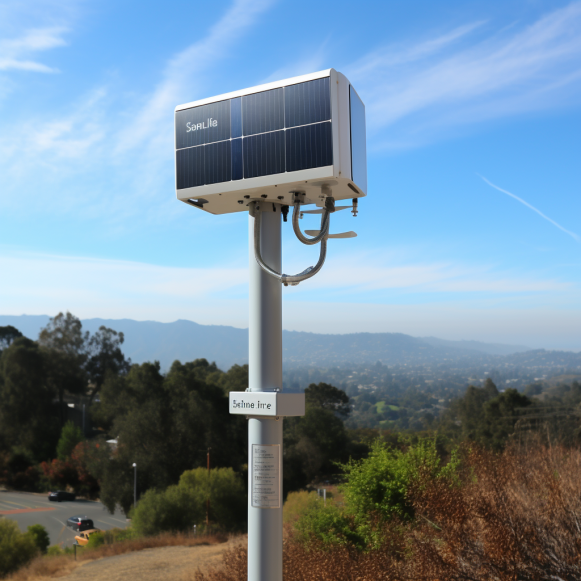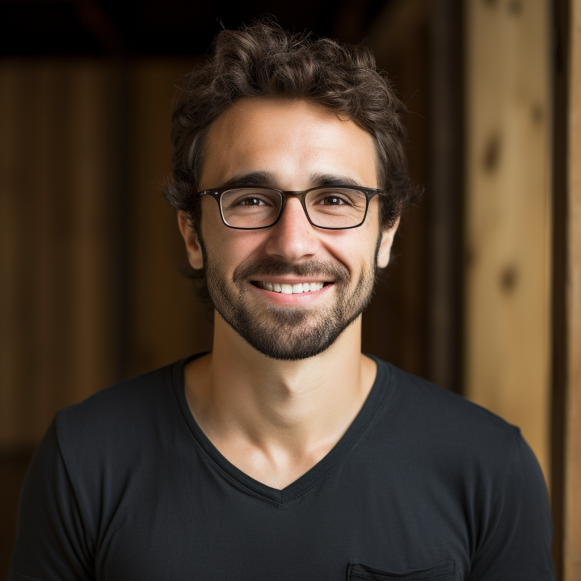Can AI help prevent wildfires from spreading across the Bay Area?

Officials in Oakland and Santa Clara County are testing high-tech sensors to reduce fire risk
Artificial intelligence can do everything from create websites to write grocery lists, but can it prevent catastrophic wildfires?
More than 7 million acres have been burned by wildfires in California over the last three years, and officials across the state are deploying cutting-edge, innovative methods to prevent further devastation by getting to fires before they spread.
In Santa Clara County, officials are installing artificial intelligence-enabled sensors that measure air particles and temperatures to detect where a small wildfire may be burning out of sight before it grows into a raging blaze.
Ten of these iPad-sized sensors are already installed in the hills east of Oakland as part of the Oakland Fire Department’s 24-month pilot program. Cal Fire is also testing 400 “ultra-early” sensors from Dryad Networks, a German startup, in Fort Bragg.
These sensors “cover more ground broadly, and can spot fires sooner and earlier, particularly in the smoldering phases of fire right when there isn’t even a visible flame,” according to Seth Schalet, CEO of the Santa Clara County FireSafe Council. “The sooner and faster you detect the fire, the sooner and faster you can put it out, obviously resulting in less damage to structure, people, and the environment.”
The Saratoga-based FireSafe Council is collaborating with San Jose Water to install these sensors across 6,000 acres in the San Jose watershed, across several local communities, in an effort to safeguard the drinking water for millions of Santa Clara County residents. They are not revealing their exact locations as a precaution.
The solar-powered sensors, manufactured by N5 Sensors, measure gas, particulate matter, and heat. The data is then analyzed by AI to detect small fires before they spread.
These data are also routed to an interactive dashboard, which visualizes sensor data and fire alerts.
“What we do is unique in that we combine multimodal sensors.” So we’ve got gas and chemicals, heat particulates, all in there with AI, and that allows us to identify when there’s a fire nearby versus when there’s just better air quality because there’s a fire 50 or 100 miles away,” said Debra Deininger, chief revenue officer of N5 Sensors.
AI has been compared to fire by technology commentators as a revolutionary tool that can also be dangerous and cause unthinkable damage. Deininger stated that safety concerns had to be prioritized when designing the sensors.
“We’ve got a number of safeguards in place, in terms of the construction of the very heavy duty case, the design of the battery circuitry, the design of the sensor circuitry-all of that is designed with multiple failsafes in place to automatically shut it down if anything goes awry,” she explained.
The AI used in sensors is not as novel as ChatGPT and script-writing technology. It employs machine learning to interpret patterns in the massive amounts of data collected from sensors.
N5 Sensors, which received funding from the US Department of Homeland Security and collaborated with NASA, launched its sensors at the end of last year. They have operations in nine different states as well as Canada.
Deininger estimates that sensors will be installed in the San Jose watershed area within the next two to three weeks.
While there is no silver bullet for reducing wildfire risk, sensors like the N5 are part of a growing toolkit used by officials to prevent fires. Satellite imaging and cameras are already in use, and Schalet stated that he intends to bring in even more cutting-edge technology, such as PanoAI wildfire cameras and Dryad Networks sensors, through collaborations with cities and utilities.
The hope is that early detection will allow firefighters to put out fires before they spread and cause significant damage. A wildfire that raged through Oakland in 1991 killed 25 people and cost an estimated $3.9 billion in today’s dollars in damages. There have been dozens of major fires in the Bay Area since then.
In 2020, the SCU and CZU Lightning Complex fires destroyed nearly 400,000 acres of land across five Bay Area counties, and the LNU Lightning Complex Fire consumed 375,209 acres in the North Bay.
Wildfires can also endanger the water supply, and the air pollution they produce can have long-term consequences.
“A big part of this is insurance, sustainability, and protection of that supply,” said Jared Lewis, San Jose Water’s manager of environmental planning and natural resources. “The watershed is also close to a number of vulnerable communities, so there’s a community protection component that’s also important for us.”
On Thursday, Oct. 19, at 5 p.m., Schalet will present the FireSafe Council’s early wildfire detection and mitigation solutions at the annual Cupertino Public Safety Forum.






